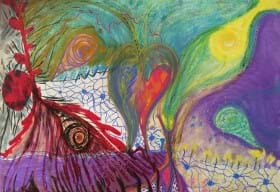Explore the Intricate Connection Between Art Therapy and the BrainPosted by Madeline White on August 16th, 2023 Art therapy is psychotherapy that focuses on improving mental and emotional health with the help of creative outlets. This form of therapy has gained immense popularity over the last few years as a potential treatment for improving overall well-being. Art therapy utilises multiple art forms, mainly drawing, sketching, sculpting, painting, etc., to engage in a therapeutic process.
Creative art therapy focuses on the mind-body relation and on building an inextricable connection with our thoughts, emotions, and the psychological working of the brain. What is really exciting to note is that art therapy has multiple effects on the development of almost all areas of our life. Let’s delve deeper into it – How Does Art Therapy Help the Brain?Art therapy has been a proven technique to help people with neurological benefits. Regulating EmotionsArt therapy is a successful way to activate brain regions that regulate emotions. Engaging in creative activities or processes is a great way to reduce anxiety and stress and regulate emotions. Dopamine is released, and good feelings are encouraged when the process of making art activates the reward pathways in the brain. NeuroplasticityNeuroplasticity reorganises neural connections in the brain and forms new ones. Engaging in creative processes can help build new neurons, allowing the development of enhanced cognitive behaviours and functions. Mindfulness and AttentionArt therapy supervision in Western Australia is said to increase focus and attention. There are specific mindfulness-based art therapies that help individuals seize the present moment. Trauma RecoveryThe relationship between art therapy and the brain impacts the field of trauma rehabilitation. People can externalise their emotions by making art, which creates a secure distance from painful events. This procedure supports the brain’s natural healing processes and the processing of the trauma, progressively lessening the emotional intensity of the memories. Finally, the relationship between art therapy and the brain highlights the immense benefits of creative expression for mental and emotional health. As we go further into this complex relationship, it becomes clear that art therapy is not just about aesthetics but rather a dynamic, scientifically-backed method that activates the brain’s intrinsic capacity for healing and development. Author’s Bio: The author is the owner of a company offering creative art therapy and educating the audience on the dynamics of art therapy and the mind of individuals.
Like it? Share it!More by this author |



